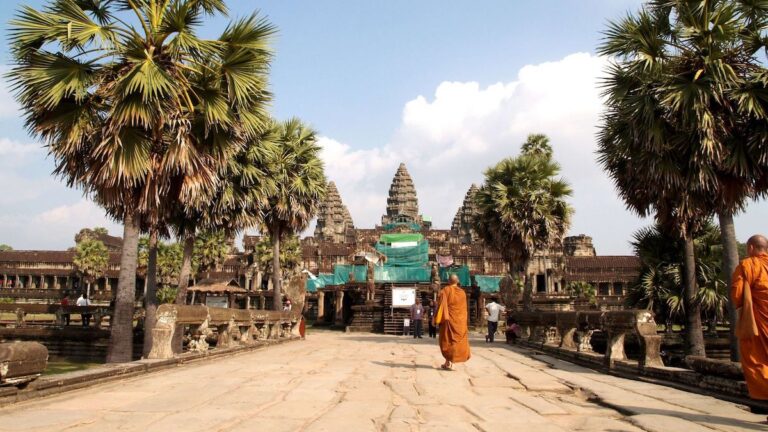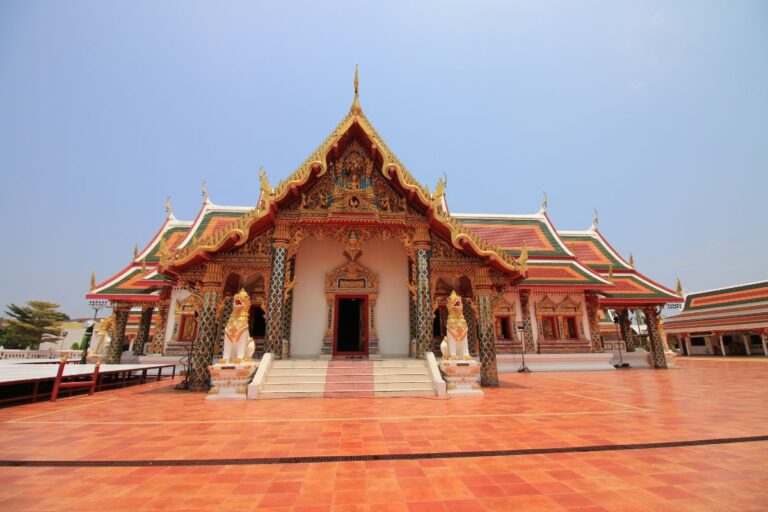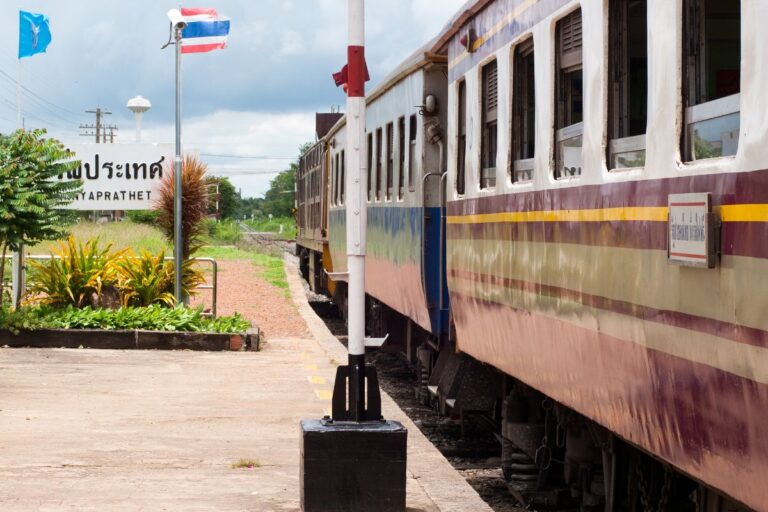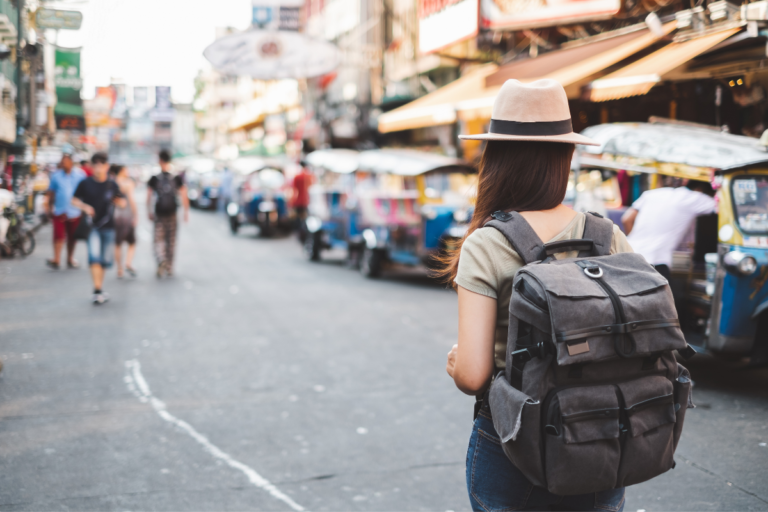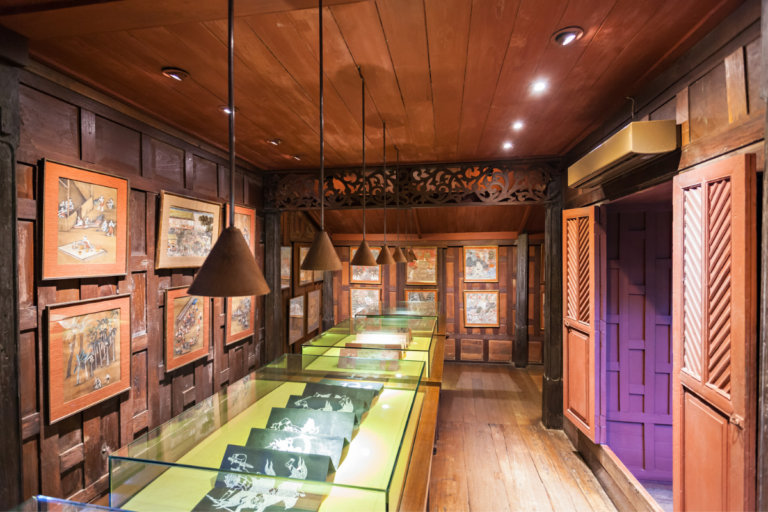Wat Arun Temple Bangkok
Wat Arun, also known as the Temple of Dawn, is one of Bangkok’s most iconic landmarks, boasting a rich history that spans centuries. The temple is situated on the Thonburi side of the Chao Phraya River, opposite the Grand Palace and Wat Pho, two other prominent historical sites in Bangkok.
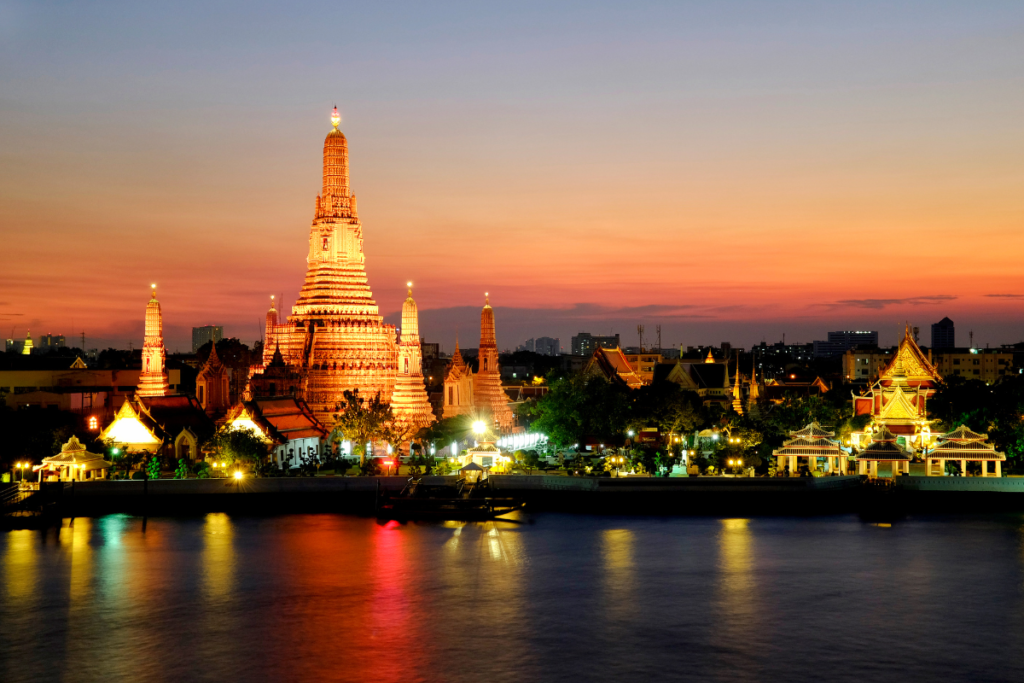
- Other names: Temple of the Dawn, Wat Arun Ratchawararam Ratchawaramahawihan
- Entrance fee: 100 baht for foreigners
- Address: 158 Thanon Wang Doem, Wat Arun, Bangkok Yai, Bangkok, Thailand
- Open hours: 8 am – 6 pm
Even the least culturally inspired tourists should find a tuk-tuk and make the smoky pilgrimage from the Khao San Road to Wat Arun, or Wat Arunratchawararam Ratchaworamahawihan, to give its full name.
There are an incredible 31,200 temples in Thailand, and after seeing a few they do generally tend to all blur together in the memories of many farang, or foreigners. Lots of gold, Buddhist monks in orange robes, devout locals paying their respects, dragons, turtles, and, of course, beggars seeking alms.
But taking that approach to Wat Arun would be a mistake. Situated in the Yai district of Bangkok, on the banks of the Chao Phraya River, the ‘Temple of the Dawn’ is a national icon with a long history to match.
History of the Temple
The exact origins of Wat Arun are somewhat unclear, but it is believed that its foundation dates back to the Ayutthaya period in the 17th century. During this time, the area around the temple was known as “Bang Makok,” named after the olive tree (makok) that grew abundantly in the region. The temple’s original name was “Wat Makok,” reflecting the prevailing landscape of the time.
The temple underwent several renovations and additions during the subsequent reigns of various Thai kings, leading to its present-day grandeur. Its most notable feature, the central prang, is a towering Khmer-style spire adorned with colorful porcelain tiles and intricate floral patterns. The works on the central prang were started in 1824 and completed in 1851. The prang represents Mount Meru, the center of the universe in Hindu and Buddhist cosmology, symbolizing the sacredness and spiritual significance of the temple.
The Temple Architecture
The temple itself consists of a huge prang, or tower, that is between 70 and 104 meters high, depending on the exact measurement used, and is encircled by four smaller prangs. The towers are decorated with seashells and ballast – tiny pieces of colored glass and porcelain that were used to correctly weigh boats coming to Bangkok from China. These create intricate patterns across the prangs. Not only is the decoration unique, but so is the architecture, which is a blend of Khmer and Thai styles.
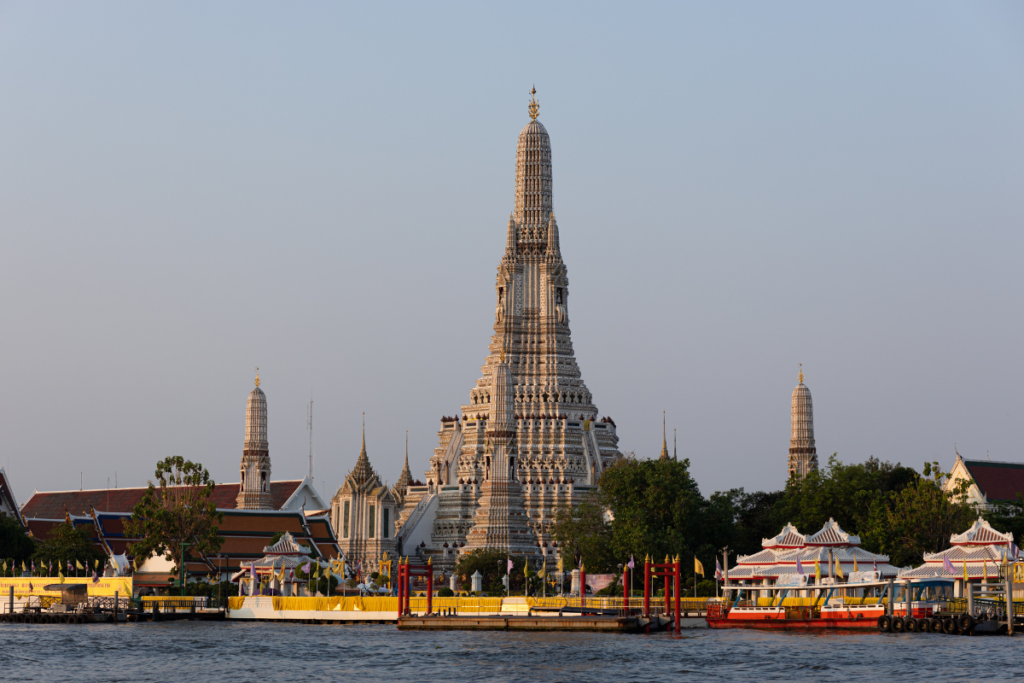
The central tower was designed to represent Mount Meru, the center of the universe and home of the gods, while the satellite prangs signify the four winds. There are statues of Pai, the wind god, on his horse on all four of the smaller prangs. There are also pavilions that contain images depicting the four stages of the Buddha’s life – birth, meditation, preaching, and enlightenment.
The grounds of the temple are also home to hundreds of statues – everything from ancient Chinese soldiers and animals to depictions of the Hindu god Indra riding on Erawan. There are also a number of small, but still impressive, buildings, one of which is a museum and another a library.
Wat Arun was originally located on the palace grounds with the name Wat Chaeng – a term many locals still use today. However, it was transferred across the river under the rule of Rama I, the first monarch of the reigning House of Chakri of Siam who ascended the throne in the 18th century.
Inside the complex – which measures 234 meters around the circumference – is a huge Buddha, which is said to have been either designed by King Rama II or cast in his image. Either way, his ashes are buried in the base of the statue. King Rama II started the construction of the main prang, and it was completed during the reign of his son King Rama III.
On the Wat Arun side of the river are six sala, or pavilions in a Chinese style that is made out of green granite and contains landing bridges, a taste of what is to come.
Why Is It Called “Temple of the Dawn”
The tag ‘Temple of the Dawn’ comes from Aruna, the Indian god of the dawn. In spite of this, the best views of this Wat are probably from afar and in the evening. If you want to recreate the iconoclastic image of the sun setting directly behind the temple, the best place to do so is from the other side of the river. There are quite a few restaurants that have clear views from their location, making it easy to plan your visit, since the sun sets between 18:00 and 19:00 all year round in Bangkok.
A second possibility for Wat Arun’s etymology is a legend of King Taksin, who ruled before the current Rama dynasty. The Siamese capital, then at Ayutthaya, was under a terrible siege by a Burmese army, and after fighting his way out, Taskin arrived at this temple just as dawn was breaking. In thanks, Taksin restored the temple, and also briefly made it the home of the Emerald Buddha, which had been plundered from Vientiane.
Best Time to Visit Wat Arun
A good time of year to visit is during the Royal Tod Kathin – one of Thailand’s most colorful festivals. During this time the King travels down the river in a procession of Royal barges and presents the monks with new robes following their three-month Lenten period of reclusiveness.
Most city tours include a stop at Wat Arun, which charges 100 baht for entry for foreigners. The temple is open every day between 8:00 and 18:00 with the easiest way to get to Wat Arun by boat. The Chao Phraya River Express leaves from Tha Tien, and ferry crossings should cost just two baht.
Interested in visiting more iconic temples? Find out how you can get from Bangkok to Ayutthaya.

